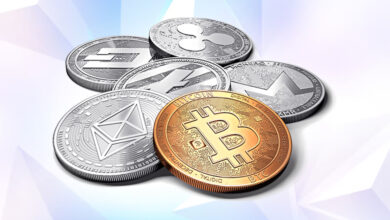Bullish IPO: Innovation or Illusion?
What the First Stablecoin-Settled IPO Reveals About Digital Assets – and What MENA Can Learn?

When Bullish, the crypto exchange backed by Block.one and Peter Thiel, hit the public markets, it wasn’t just another listing. It was the first U.S. IPO ever settled entirely in stablecoins, raising $1.15 billion from investors through digital escrow.
Wall Street banks — J.P. Morgan, Jefferies, and Citigroup — played their traditional role as underwriters. But instead of holding U.S. dollars in cash escrow, they processed Circle’s USDC, PayPal’s PYUSD, Ripple’s RLUSD, and other regulated stablecoins through custody partners. Tether’s USDT was excluded, a silent but telling choice: in the eyes of underwriters, only stablecoins tied to U.S. regulatory frameworks were acceptable for a public market debut.
This detail, perhaps more than the IPO pop, marked history. For the first time, Wall Street banks directly handled stablecoins as settlement currency in an IPO. The process is not just about Bullish — it’s about how the banking industry itself is being re-engineered around digital money.
What followed was historic. The Bullish IPO opened at $90 (Ticker: BLSH), a 143% premium over its $37 listing price, and climbed to an intraday high of $118 before closing around $68–$70. As of the time of writing, the pre-market of Bullish (BLSH) Stock price stands at $59.51—still reflecting a roughly 83% debut surge that valued Bullish between $10–13 billion.
The Accounting Mirage
But beyond the headlines, the Bullish prospectus raises hard questions. Buried inside is a reliance on non-standard metrics, including “Adjusted Transaction Revenue,” a financial measure outside IFRS or GAAP standards.
These adjustments inflate revenue optics, presenting Bullish as more profitable than strict accounting would suggest. Investors familiar with the company’s history — and the $4 billion EOS ICO that funded it — may view this as a continuation of a pattern: capital raised under one promise, recycled into another venture, presented under creative accounting frameworks.
In short, Bullish’s IPO reflects not only innovation, but also the persistent opacity of digital assets reporting.
CoinDesk and the Media Angle
Another layer of scrutiny comes from Bullish’s ownership of CoinDesk, one of crypto’s most influential media outlets. CoinDesk highlighted the historic nature of the Bullish IPO, but critics point out that it downplayed concerns around EOS’s controversial history, the reliance on non-IFRS measures, and the balance sheet.
CoinDesk insists on editorial independence. But when the Bullish IPO and the media platform reporting on it share the same corporate umbrella, questions naturally arise about impartiality. This doesn’t change the story — the IPO itself is the story — but it does highlight the structural conflicts that shape narratives in the digital assets space.
MENA: A Different Path Forward
This is where the Middle East and North Africa (MENA) region diverges.
- Phoenix Group (listed in Abu Dhabi) remains the only digital assets player publicly traded in MENA, focused on mining and infrastructure.
- For a Bullish-style exchange IPO to happen in Dubai or Abu Dhabi, regulators would demand far more transparency.
- Under VARA (Dubai), ADGM (Abu Dhabi), and DIFC (Dubai International Financial Centre), listings are tied tightly to IFRS standards, leaving no room for “adjusted” revenue narratives.
Scrutiny would extend to founders, funding sources, and reserve audits. The controversies around EOS’s $4B raise and allegations of wash trading would almost certainly block approval in MENA.
This is not to say the region lacks ambition. On the contrary, there is appetite for more listings to challenge Phoenix’s crown as the only listed digital assets company in MENA. But growth here will not come at the expense of credibility.
A Test for the Industry
Bullish’s IPO deserves credit. Against skepticism, and despite its history, the company managed to pull off a first-of-its-kind listing settled in stablecoins — and reach a valuation that forces Wall Street to take crypto exchanges seriously.
But the real question starts now: can Bullish deliver on its promises?
- In the U.S., Coinbase has set the benchmark as the only other listed exchange, with transparency and scale that regulators recognize.
- Kraken, once rumored to be preparing its own IPO, must now reassess its timing and strategy in light of Bullish’s move.
- And globally, Binance — still the dominant exchange by volume — will be watching closely. Does Bullish’s arrival on Wall Street push Binance to consider a “welcome package” response?
The Bullish IPO may be historic, but history is only the first chapter. The real measure will be whether the company can prove that its innovation is more than accounting creativity, and whether it can stand alongside — or even ahead of — Coinbase, Kraken, and Binance in shaping the next era of digital assets.





